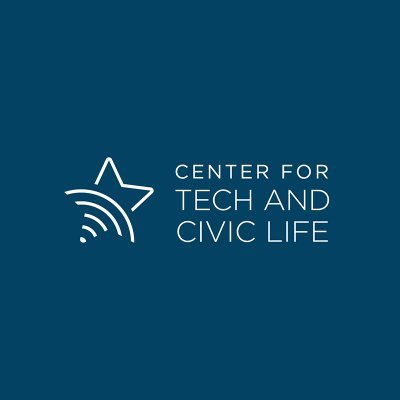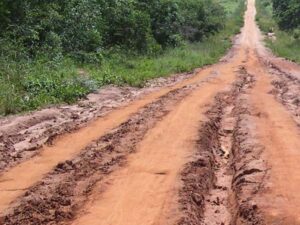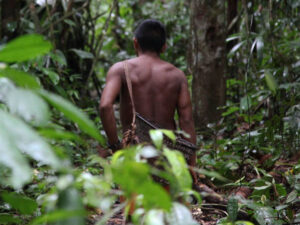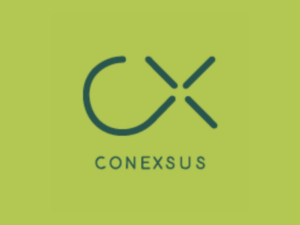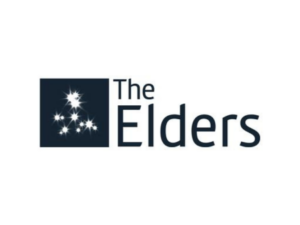The Center for Tech and Civic Life works to make voting more inclusive and secure, increase public confidence in the electoral process, and ensure that voters are better informed. One way they do this is by offering training and tools for local election administrators to help modernize and secure the voting process and better engage with voters.
Tiana Epps-Johnson of Center for Tech and Civic Life spoke with Ashley Hopkinson on December 6, 2023. Click here to read the full conversation with insights highlighted.
Ashley Hopkinson: Can you start by introducing yourself and your organization, and telling me about the problem your organization is working to solve?
Tiana Epps-Johnson: I’m Tiana Epps-Johnson, the founder and executive director at the Center for Tech and Civic Life (CTCL). The heart of our work is the concern that people need basic, accurate information to be able to engage in civic life, but it is often hard to find in the places where people look for it. In particular, really basic information about how the voting process works in the United States is hard to find in modern digital spaces. Oftentimes, when people can access that information, it is in legalese, or it’s full of jargon, or in formats that make it hard to access, making it challenging to be a citizen who is engaged in public life. [The United States] has placed itself as a central example of what democracy could look like in the world, yet we have fundamental information gaps that essentially prevent public engagement in sound and robust democracy. It’s wild.
Back in 2010, at the first organization where I worked, we were creating the first dataset that answered the question: Where do I go to vote? A tool where you could put your address in and it would let you know your voting location and how to get there. Then I met one of my co-founders and we started to build upon that and look at other questions that were critical to civic engagement, but had really big information gaps. Our founding team ultimately spun off from the other organization, and three of us came together as founders to work on the challenge of connecting people with civic information.
The next issue that we solved for was making it easier for people to find out who was running on the ballot. That’s a really important question for a lot of reasons. People often decide whether or not to participate by looking at who’s on the ballot because that’s a proxy of what’s at stake and whether or not it’s worth the time to engage. If you can’t find that information, not only is it hard to make informed choices, it can also be hard to decide to participate in the first place. We’ve worked to aggregate information about what is on the ballot for the whole country, to standardize that, and we’ve partnered with some of the biggest technology companies in the world, as well as nonprofits and other organizations, to get that information into spaces where people can find it in time to do research and act in whatever way it makes sense for them at the polls.
Answering basic civic questions like what’s on the ballot and who are my elected officials continues to be some of the core work that we do at CTCL today. We describe one major part of our mission as connecting Americans with the information they need to become and remain civically engaged. We’re also working to solve for how to create partnerships between the government, technology companies, nonprofits, and others to make basic information about the voting process easily available. We began to ask questions about the deeper, root causes for why there needs to be an intervention between these different sectors to solve for something that seems fundamental to democracy. That’s led us to understand the resource scarcity that characterizes elections in the United States.
We have a really decentralized election system, and like other sectors, such as public education, the main funding source for elections in the United States is local property taxes. That can mean your access to democracy is dependent on your zip code, regardless of the policy environment. [Your zip code determines] the resources the local government has to inform the public, to make sure there are enough polling places, and to have enough staff to ensure the process runs effectively. Understanding some of those challenges helped us see where there has been a lack of support for the public servants who do important work to make our elections function. This helped us build out the other part of our work, which is supporting local election departments that are doing their best work to serve voters. We work with election departments across all 50 states and help them build skills and tools, and sometimes we provide direct funding to support them and their work serving voters.
Ashley Hopkinson: I see your goal is to reach the voting population, and you have partnerships across different states. Is that primarily how you reach people?
Tiana Epps-Johnson: Yes. Sometimes I describe it as having a B2B model for getting to voters because we support folks who are working directly with voters. In our work around civic information, we support organizations and technology companies who are working to inform the public about the civic process by supporting them with accurate information regarding who’s on the ballot, who our elected officials are, and how the process works. When it comes to thinking about the actual administration of the voting, from registration to certification, we’re working directly with the local government that does that work so they’re able to most effectively serve their voters.
Ashley Hopkinson: There are a lot of people working with different arms of civic engagement. What would you say makes CTCL distinctive in this space?
Tiana Epps-Johnson: I would name a few things. One is that we do aggressively nonpartisan work. In civic engagement, there’s room for partisan and nonpartisan engagement, but our work is very oriented at engaging everybody who is interested in being part of the American civic process. I think something else that’s distinct is that oftentimes, when it comes to the sector of voting and voting rights, strategies usually look like a handful of specific things: working to pass policy to change rules about how the voting process works, using litigation as a tool to right wrongs that voters have experienced, doing direct mobilization of voters and persuading them to turn out to vote. Our work is not focused on any of those pieces.
We’re focused on what we describe as implementation: making sure that regardless of the policy environment, or who might show up to vote, democracy is administered in an excellent way for every voter. I use the example of the Americans for Disabilities Act as a way to understand why implementation is important. The ADA has been on the books for over three decades, and it’s a hard-fought policy. There has been lots of great work making sure that it’s available for folks across the United States, so they can have more equal access.
However, there’s been research done at polling locations that’s found that roughly 60% of polling locations are not accessible or in alignment with the ADA. What that demonstrates is that even when you do a great job of winning a policy, even when it’s a well-initiated law, there can be gaps wherein it’s not fully implemented in a way that reaps its full benefits.
What we might ask in a situation like that is why can’t an election department make sure there are proper ramps, or that the doors are wide enough, or that other needs are met that might make a polling place accessible? Oftentimes, that’s about not having enough funding or not having best practices established regarding how to implement those rules without malice, or other things that are meant to disenfranchise. When you can get to the root issue, you often can make a lot of headway that is transformative for a lot of voters, without having to use tools like policy or litigation.
Ashley Hopkinson: That’s really significant. I had a conversation with a mentee about a runoff in New Orleans, and she told me, “Oh, I didn’t know anything was going on because I didn’t get any mailers.” For her, the knowledge about an election is received through mailers.
Tiana Epps-Johnson: Yes. We think a lot about the invitations people need or expect to engage in civic life. That person might need a candidate at the door to invite them into the process. What we get really excited about when working with the government is that local election departments are the only folks who have a mandate to reach out to everybody. If you’re a candidate, your role is to get someone to show up who’s ultimately going to vote for you. So if you’re using your resources wisely, you’re probably going to use data to knock only on the doors of folks who are most likely to show up and vote for you. But the local government’s responsibility is to serve anyone who’s eligible to vote. We see that as a really powerful way to engage as many folks who want to participate as possible.
Ashley Hopkinson: What is your metric of success? You’re serving such a large community, how do you know you’re moving toward more democracy for more Americans?
Tiana Epps-Johnson: There are some big-scale metrics that we look at, and there are some really specific things that we look at. For instance, we look at how many voters are ultimately served by the folks we support, or how many voters are served by election departments that we work with directly. We’ve seen hundreds of millions of hits on our civic information site about the voting process, and we work with election departments that serve about three-quarters of America’s voters. That is one thing that lets us know the scale of our reach at a high level, but we are also really concerned about the depth of what we’re doing in those places.
Let’s talk about election departments, for example. Sometimes we measure success by the outputs of things that we’re working to co-create with election officials to help support the field. An example of that is a program we lead called the U.S. Alliance for Election Excellence. We’re working to bring together local election departments across all states to co-develop a set of national values and standards of practice to guide the field. Ultimately, we’ll release a certification program support with a set of resources to help election departments easily implement these shared values and standards in their localities.
The way we understand some of that impact is by developing those values and standards through the process of working with a diverse group of election departments. Being able to see different types of diversity, from size of community to geography, and seeing folks that represent that diversity excited and contributing, is one metric of success for us. The actual creation of those products and releasing them out in the world is another way of understanding success.
Ultimately, we work to understand the implementation of these best practices and whether they are helping an election department better serve their voters. We do that through a lot of different methods, from surveying to interviews to other direct work with election officials to understand how implementation helps to shift their actual practice.
Ashley Hopkinson: What do you hope will result from a CTCL stamp of approval on the election process?
Tiana Epps-Johnson: One of the really beautiful but challenging things about American democracy is that it’s a really decentralized process. We have 50 states that have different laws that describe how elections can run, and there are a lot of choices around how to implement elections at the local level, even beyond that 50-state variation. That means it can realistically look one way in one place, and another way in another place. We think one core element that is missing right now is a shared playbook that’s been locally developed by election officials and that helps establish a baseline standard of service that every voter deserves, regardless of the geography they’re in, and regardless of the rules that are in place. That’s what we’re working to define through these values and standards of practice, and that’s one reason why we think having a U.S. Alliance certification program is so important.
Having a good housekeeping seal of approval through a certification program that says this election department, just like your election department there, is committed to a shared level of experience for American voters, which you can easily define and hold them accountable for. This builds confidence for voters to demand their experience is up to standards.
It is about both best practices being implemented and giving voters a high-quality experience, so they are likely to show up and continue to be voters again and again. It is also about building confidence in the process where they live, over time, and in institutionalizing that trust beyond their own community because we see a lot of fracturing right now.
Ashley Hopkinson: Could you share a story of impact from the work, something that illustrates how you see the organization making a difference?
Tiana Epps-Johnson: Sure. I’ll share an example of how we worked through one of our biggest challenges, which is having a finger to the pulse of what’s happening in the field of election administration so we are able to respond in a time of crisis. One of those times was 2020. We were hearing from election departments across the country that not only was the pandemic requiring them to significantly change how they served voters, it was driving up the expense of administering the election.
What we did at CTCL was twofold. First, we brought together a group of experts and developed a set of trainings that we delivered twice a week, every week, for two months over the summer of 2020. The trainings were on everything a local election department might need to know to be able to pandemic-proof the election process. Some of that was best practices around leadership in a moment of crisis. Some of that looked like the nitty-gritty of how to do an outbound mail process at scale when you have a lot more voters voting by mail. Some of that looked like how to apply public health guidelines at a polling place so you didn’t create a super spreader event.
We’re always listening to election officials in our work. What we were hearing, in addition to concerns about needing to change the process, were complaints of resource scarcity. Election officials were like, okay, it’s one thing to understand what it’s going to take to be able to pandemic-proof the process, but we are running out of money in our primaries because everything is much more expensive, and we didn’t have enough funding to begin with.
There was a group of advocates who called on the federal government to spend a significant amount of funding to support local election departments in the 2020 election. Ultimately, the federal government only provided about 10% of what was needed, which was about $400 million. At CTCL, we were hearing from election departments that this wasn’t even covering their postage costs for one primary.
Election officials said they didn’t have the equipment, or the staff, or many of the most basic things they needed to pull off the 2020 election. For the first time, we thought about what might it look like to have philanthropy chip in to fund part of the budget gaps that election departments had. We ended up raising $350 million and regranting that across about 2,500 jurisdictions. Many election departments have described that as being critical to allowing the machinery of democracy to survive.
It wasn’t just us, of course. We were able to do that in close collaboration with other core partners, but it is some of the work that we’re most proud of. That has come with some backlash and a lot more spotlight, but it also is some of the greatest impact that we ever have had.
Ashley Hopkinson: That sounds like it was very successful. What is something that you’ve implemented that didn’t work as well, or that failed to meet your expectations? What was the lesson you learned from it?
Tiana Epps-Johnson: There have been lots of examples of things that didn’t go the way I expected, and lots of lessons learned. I like to say that we are always working from a learning agenda so we can reframe our failures in positive ways and feel forward. I can share this story as a continuation of that story that shows an unintended consequence.
In 2020, we were supporting election departments directly with funding because we heard it as the greatest need that election officials had. We were thinking about it through the lens that we’d always used, which is supporting any election department in a nonpartisan way. We were a small organization, and no one was that interested in what we were up to because not a lot of people are that concerned about what is happening in local election administration. That doesn’t make a lot of front-page news.
But when we started to work at the scale we were working at in 2020, with something that was so high stakes, it came with a tremendous amount of public attention, and it also came with a very well-coordinated, sophisticated, and targeted disinformation campaign that’s continued to this day.
A lesson I’ve had to learn as a leader is when to communicate in proactive ways and effectively tell the correct story about the work that we’re doing. And also to recognize when it’s not worth going back and forth because it’s just a challenging communications environment that’s meant to disrupt your focus on the work. It can be really hard to stay focused and not be distracted by the noise when there’s work that you’re deeply proud of being mischaracterized. It takes a lot of discipline, and I’ve been proud of the discipline that my team has found. It’s allowed us to continue to stay the course and work directly with public servants.
I’ve learned a lot about the importance of storytelling, and proactively having an organizational voice about what the organization is doing and what it stands for. Again, knowing when to jump into the fray and when not to has been an important lesson I’ve learned on the job.
Ashley Hopkinson: One of the challenges that comes with scale is hyper visibility, almost like a spotlight that can come as a surprise.
Tiana Epps-Johnson: That’s right. There are trade-offs. I did not get into this work for the spotlight; I got into this work because I care about the problems that we solve. Recognizing that sometimes, to solve those problems, it is important to be in the spotlight, has been my personal leadership journey. Some of my peers are also grappling with this as they find more and more visibility and more and more scale because they are more and more successful at delivering on their goals.
Ashley Hopkinson: Aside from funding, what are some other challenges that you’ve faced in the work? What would you say has been challenging, and how are you working to solve it?
Tiana Epps-Johnson: One challenge that has been present in my entire experience as a founder is making the case, to funders in particular, of why it’s important to simultaneously build the organization while delivering on your mission. Oftentimes, foundations want to keep overhead really slim so they can invest funding in programmatic work without investing the same level of intention and resources into building out their operations, their staff culture and values, and all the things that make an organization sustainable beyond just the programmatic work.
That can do a real disservice to organizations being able to both do their best work and exist in the long term. I am really proud that even when we were a relatively small organization, I advocated for support from our funders for things like investing in management coaches for my team, or spending time figuring out our core values as an organization and how we would operationalize and hold ourselves accountable to those values.
Making sure that we have systems around performance evaluation and compensation and the types of things that let people see pathways for growth often leads to staff who are both high-performing and want to stay over time. Those things are really important to us, but they take resources, time, attention, and staff, and it has been a struggle sometimes to make the case for those resources because sometimes they’re not seen as core to deliver on the mission, even though they very much are.
Ashley Hopkinson: How do you feel you are working toward advancing systems change? What approaches are helping you center your work in democracy, and then spread that work?
Tiana Epps-Johnson: When we think about systems change, we think about building the civic infrastructure that’s needed for American democracy to function well. We have two areas where we are making a tremendous impact. One is around helping to support, coordinate, and connect organizations who are working to support election departments, and then helping grow that field by bringing together folks who have a diverse set of expertise, and who are interested in being in their own lane to support election officials in doing their best work. There’s been a bit of field building and helping to lead around a set of shared strategies that I think is really unique and critical to our systems approach at CTCL.
The second is direct work with folks who serve voters. We are often concerned about achieving that same level of field building when we’re trying to connect relatively disconnected local government offices with one another, so they have peer networks to share best practices with, they can support each other, and ultimately improve their level of service delivery to voters. That is a key part of getting to a place where your democracy isn’t dependent on your zip code.
Ashley Hopkinson: What would you say is needed from other actors in the space? You talked about diverse expertise. Can you give a couple of examples of what that looks like, and what other players in the field can do?
Tiana Epps-Johnson: One type of expertise that’s really exciting to have at the table is more technologists who are interested in helping to rebuild and reimagine the tooling that powers election administration. For example, one organization I’m excited about, and that is now a partner as part of the U.S. Alliance, is the U.S. Digital Response. They’re an organization of technologists who are working with election departments, both through our program and through their own election programs, to do things like make sure election officials have the best tooling to recruit and train enough poll workers to keep polling places running smoothly, and to keep all the different parts of the process that are reliant on volunteers working effectively.
Sometimes they’re building tooling like a website template that makes it easy for election officials to accurately inform their local public how that process works. This fills a lot of local information gaps, and it is critical infrastructure that can support election officials in being more effective and accurate communicators. There are lots of different ways where technology can impact the election process, and we as a sector are far behind in modernizing the tools and systems that election officials are using to do this critical work. Technologists are just one example of folks who are bringing their expertise to bear on the challenges around democracy.
What’s really cool about where we are now is that within the alliance, we have folks who are experts in the law, in policy technology, in election operations, and in curriculum development, and they all have an ear to the ground of what’s happening regularly in the space. We talk on a regular basis. If we hear of a challenge that’s bubbling up, or that has existed for a while, we can all think about it together. Often, those challenges are a little about technology, a little about culture, a little about the law and policy environment. When we’re all sitting around the table, we actually can figure out what responses the different parts need, which allows us to much more effectively diagnose and move towards solutions that work.
For me, that feels like the most fun innovation right now, and it is relatively new. We’ve only been working as the U.S. Alliance for about two years, but it is exciting to see what’s possible when you develop a regular operating rhythm with folks who have different expertise, and you all work together.
Ashley Hopkinson: Where do you see the organization going in the next five years? How do you see your work evolving?
Tiana Epps-Johnson: I see a few things on the horizon. Hopefully, five years from now, we’ll have rolled out a certification program that’s best in class. We’re looking at best-in-class elections, ensuring there are election departments across a diverse range of states that are excited about being part of the certification program, and working together to deliver better elections for all voters.
I hope that in five years, we’ll have been successful in helping bring election officials together, as well as other people in the voting sector, to advocate for Congress to start contributing enough funding to local election departments so there doesn’t need to be large scale interventions from philanthropy, or anyone else, to support this basic part of American democracy. I also hope that we can continue to support some of the core folks who inform voters every day, continue to keep those tools accurate, and evolve with the information needs that folks have. Over the last decade and a half, some of those needs have been persistent, but as the environment around disinformation changes and technology changes, information needs to change.
We also need to be really nimble as we continue to serve voters, which can be hard when you are working with so many different actors across so many different levels of government, but it’s required.
Ashley Hopkinson: Since you’ve been in this space for a while, and you’re able to see the shifts that have been happening, especially in disinformation, what insight or advice would you share with someone who’s trying to do civic and democracy work in the US?
Tiana Epps-Johnson: The first thing I would say is do it. There is so much work to do, and it’s worthwhile because the stakes are high and the payoff is awesome. I think the second part is that it’s really helpful to come in thinking about a set of skills you have, but also a problem that you want to solve. Then, being humble about understanding who is also working to solve that problem, and what opportunities exist for you to use what you do best to either help get close to better solutions, or contribute to getting to those solutions faster.
Something I’ve been guilty of, and that gets in the way of the rate of change that we could otherwise see, is coming into something new and not first taking that time to understand the landscape. It’s so important to understand how you might be able to move in collaboration with others, especially when you’re excited as an entrepreneur and just want to solve for something. I think it’s worth it to come in with a clear vision of what you want to add, but it’s also important to try and see what you can learn from the folks who’ve already been there, and to understand what you can add to efforts that are well on their way.
Ashley Hopkinson: That’s awesome. Thanks so much for talking with me today.
Click here to read the full conversation with insights highlighted.
Ashley Hopkinson is an award-winning journalist, newsroom entrepreneur and leader dedicated to excellent storytelling and mission-driven media. She currently manages the Solutions Insights Lab, an initiative of the Solutions Journalism Network. She is based in New Orleans, Louisiana.
* This interview has been edited and condensed.
Find other organizations working on innovation in the electoral process.

